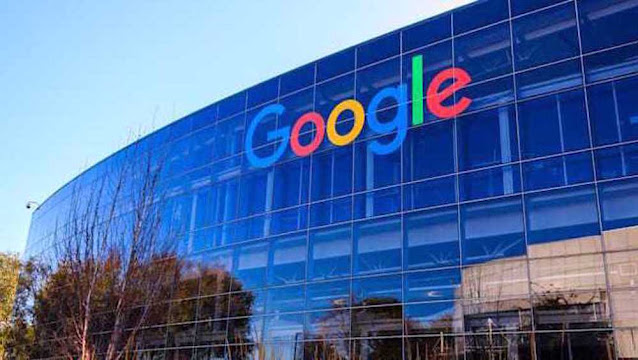In an unprecedented display of financial might, Premier League clubs have collectively spent over £3 billion ($4 billion) during the 2025 summer transfer window, setting a new record for the English top flight. This staggering expenditure, reported by Linda Ikeji’s Blog on September 2, 2025, underscores the Premier League’s status as the world’s most competitive and financially robust football league. The window, which closed on September 1, 2025, was marked by blockbuster deals, including Liverpool’s British-record £125 million signing of Newcastle United’s Alexander Isak, and has sparked widespread discussion about the sustainability of such spending, the competitive balance of the league, and the global influence of English football. This article provides a comprehensive analysis of the record-breaking transfer window, its key deals, the driving factors behind the spending spree, and the broader implications for the Premier League and world football.
The Scale of the Spending
According to financial experts Deloitte, Premier League clubs spent a gross total of £3.19 billion on new signings during the 2025 summer transfer window, surpassing the previous record of £2.46 billion set in 2023. This figure represents a 30% increase over the prior benchmark, highlighting the extraordinary financial commitment of England’s top-flight clubs. Additionally, clubs recouped £1.83 billion from player sales, resulting in a net spend of £1.36 billion, also an all-time high. The data, reported by Sky Sports and other sources, reflects the league’s ability to attract high-profile talent and its growing economic dominance in global football.
The spending was not limited to the traditional “Big Six” clubs—Arsenal, Chelsea, Liverpool, Manchester City, Manchester United, and Tottenham Hotspur. Promoted teams like Sunderland, Leeds United, and Burnley also made significant investments, aiming to secure their place in the Premier League. Liverpool led the way with nearly £300 million in expenditure, driven by the record-breaking acquisition of Alexander Isak and other high-profile signings like Hugo Ekitiké from Eintracht Frankfurt for £79 million. Chelsea, Arsenal, and Manchester United also featured prominently, with each club spending heavily to bolster their squads.
The final day of the transfer window, known as Deadline Day, saw £375 million change hands, with Isak’s move to Liverpool serving as a fitting capstone to a “mind-blowing” summer of trading, as described by an anonymous agent quoted in The Athletic. Other notable deals included Newcastle’s £55 million signing of Brentford striker Yoane Wissa and significant investments by clubs like Sunderland, which had a net spend twice that of European champions Paris Saint-Germain. This widespread spending underscores the Premier League’s financial muscle and its ability to outpace other major European leagues, including LaLiga, Serie A, and the Bundesliga.
Key Transfers and Their Impact
The 2025 summer transfer window was defined by several blockbuster deals that reshaped the Premier League’s competitive landscape. Liverpool’s acquisition of Alexander Isak from Newcastle United for £125 million stands out as the most significant, eclipsing the previous British record of £115 million set by Chelsea’s signing of Moisés Caicedo in 2023. Isak, a Swedish striker known for his pace, finishing, and versatility, is expected to bolster Liverpool’s attack as they aim to defend their Premier League title. The deal, reported by Reuters and Linda Ikeji’s Blog, was finalized on Deadline Day, adding a dramatic flourish to the window’s close.
Liverpool’s spending did not stop there. The club also secured Crystal Palace’s central defender Marc Guéhi and Hugo Ekitiké, bringing their total outlay to nearly £300 million. These signings reflect a bold strategy by Fenway Sports Group (FSG), Liverpool’s owners, to build on their 2024/25 title success under manager Arne Slot. The club’s previous restraint in the transfer market, with only £10 million spent in the 2024 summer window, makes this spending spree particularly notable, signaling a shift toward aggressive investment.
Other clubs also made significant moves. Chelsea, under owner Todd Boehly, continued their strategy of signing young talent on long contracts, with high-profile acquisitions aimed at strengthening their attack and midfield. Arsenal, led by Mikel Arteta, invested heavily in their squad, focusing on players to enhance their title challenge. Manchester United, despite a mixed transfer record in recent years, spent significantly to reinforce their attack, with their net spend ranking among the highest in the league. Tottenham Hotspur and Manchester City also made strategic signings, with Spurs achieving a rare feat by winning consecutive away matches against Pep Guardiola’s City.
Promoted clubs played a crucial role in pushing the spending total past the £3 billion mark. Sunderland, Leeds, and Burnley, all returning to the Premier League after stints in the Championship, made substantial investments to avoid relegation. Sunderland’s net spend, in particular, was highlighted by Sky Sports as exceeding that of many established European clubs, reflecting the financial backing of their ownership and the competitive pressure of the Premier League.
Factors Driving the Record-Breaking Spending
Several factors contributed to the Premier League’s unprecedented spending in the 2025 summer transfer window. First and foremost is the league’s unrivaled financial power, driven by lucrative broadcasting deals. In December 2023, the Premier League signed a £6.7 billion deal with Sky Sports for broadcast rights starting in the 2025/26 season, ensuring a record number of televised matches and increased revenue for clubs. This financial windfall, reported by Jobs In Football, has enabled clubs to invest heavily in talent, confident in their ability to generate income from domestic and global markets.
The global appeal of the Premier League has also played a significant role. Broadcast to hundreds of millions of viewers worldwide, the league attracts top talent from across the globe, with clubs leveraging their financial resources to outbid rivals in Europe and beyond. The 2025 window saw players like Isak, Ekitiké, and others move from European clubs to the Premier League, underscoring England’s dominance in the transfer market. This trend is further amplified by the league’s competitive nature, where even mid-table clubs face pressure to invest heavily to avoid relegation.
The Profitability and Sustainability Rules (PSR), which govern Premier League spending, have also influenced transfer strategies. Unlike UEFA’s Financial Fair Play rules, which cap spending at 85% of revenue by 2025/26, the Premier League’s PSR allows clubs to spread transfer costs through amortization. For example, a £100 million signing on a five-year contract is recorded as £20 million per season in the accounts, enabling clubs to make significant investments while remaining compliant. Player sales, particularly of homegrown or fully amortized players, also provide immediate profit, as noted by Ingenuity Fantasy Football, allowing clubs to reinvest in new talent.
The competitive dynamics of the 2025/26 season have further fueled spending. With Liverpool coming off a title-winning campaign, rivals like Arsenal, Manchester City, and Chelsea are under pressure to close the gap. Promoted clubs, aware of the financial and competitive disparity between the Premier League and the Championship, have also invested heavily to survive in the top flight. The combination of these factors has created a perfect storm, resulting in a transfer window unlike any other in the league’s history.
Financial Sustainability and PSR Compliance
While the £3.19 billion spending figure is staggering, it has raised concerns about the financial sustainability of Premier League clubs. The PSR, introduced to replace the previous Financial Fair Play rules, aim to ensure clubs operate within their means, with a cap on losses set at £105 million over three years. By January 2025, all Premier League clubs had passed the PSR test for the 2021–2024 cycle, allowing them to embark on another spending cycle covering 2022–2025. However, high-profile cases like Leicester City, Everton, and Nottingham Forest, which faced PSR charges in 2024, highlight the risks of overspending.
The record-breaking window has prompted scrutiny of how clubs balance ambition with financial responsibility. Liverpool’s £300 million outlay, for instance, was partially offset by £42.5 million in player sales, including Fábio Carvalho and Sepp van den Berg to Brentford. Manchester United and Arsenal also recouped significant sums through sales, contributing to the £1.83 billion in transfer revenue across the league. These sales, often of homegrown players, provide immediate profit under PSR rules, enabling clubs to reinvest without breaching financial limits.
Critics, however, argue that the current spending levels are unsustainable and could lead to financial instability, particularly for clubs outside the Big Six. The reliance on broadcast revenue and owner investment raises questions about the long-term viability of the Premier League’s economic model, especially in the face of global economic uncertainties. The 2023 collapse of Everton’s proposed takeover by 777 Partners, cited in BBC Sport, serves as a cautionary tale of the risks associated with heavy debt and speculative investment.
Social and Cultural Impact
The record-breaking transfer window has sparked widespread discussion among fans, pundits, and analysts, both in England and globally. Social media platforms, particularly X, have been abuzz with reactions to the major deals, with posts ranging from excitement over new signings to concerns about financial excess. A post by @DeadlineDayLive on August 24, 2025, celebrated the Premier League’s £2.51 billion spending milestone at the time, exclaiming, “Inject it!” This enthusiasm reflects the passion of fans who see big-money signings as a sign of ambition, but it is tempered by growing unease about ticket prices and the commercialization of the game.
The transfer window has also highlighted the Premier League’s global influence. Matches like Liverpool’s dramatic 3-2 victory over Newcastle, detailed in a @premierleague post on August 25, 2025, showcase the league’s entertainment value, driven by high-profile signings and competitive balance. The signing of Isak, for instance, was celebrated as a statement of intent by Liverpool, with fans on X praising the club’s ambition while Newcastle supporters lamented the loss of their star striker.
The cultural significance of the Premier League extends beyond England, with clubs like Arsenal, Spurs, and Liverpool maintaining massive global fanbases. The 2025 window’s high-profile transfers, such as Isak’s move and Chelsea’s youth-focused strategy, have further cemented the league’s status as a magnet for talent and a driver of football’s global economy. However, this dominance has sparked debates about competitive balance, with smaller leagues struggling to compete with the Premier League’s financial power.
International Comparisons and European Context
The Premier League’s £3.19 billion spending dwarfs that of other major European leagues. According to Sky Sports, the combined summer transfer spending of LaLiga, Serie A, Bundesliga, Ligue 1, and the Scottish Premiership pales in comparison, with the Premier League outspending all other top leagues combined. This disparity reflects the Premier League’s unique financial model, driven by its broadcast revenue and global marketability, which allows it to attract players who might otherwise join clubs like Real Madrid, Bayern Munich, or Paris Saint-Germain.
The spending gap has raised concerns about the competitive balance in European football. UEFA’s new squad cost ratio rules, set to reduce spending to 80% of revenue by 2025/26, aim to level the playing field, but the Premier League’s financial dominance suggests that English clubs will continue to dominate the transfer market. The 2025 window saw several high-profile players leave European clubs for England, including Ekitiké from Eintracht Frankfurt and Noah Okafor from AC Milan to Leeds United, highlighting the Premier League’s ability to outmuscle its rivals.
Ethical and Social Considerations
The record-breaking spending has also prompted ethical questions about the role of money in football. The Premier League’s financial dominance, while a source of pride for fans, has been criticized for exacerbating inequality in the sport. Smaller clubs in England’s lower tiers, such as those in the EFL, face financial constraints under stricter loss limits (£39 million over three years), making it difficult to compete with Premier League sides. This disparity has led to calls for revenue sharing and stricter regulations to ensure a more equitable distribution of wealth.
The impact on fans is another concern. Rising ticket prices, driven by clubs’ need to offset transfer spending, have made attending matches increasingly unaffordable for many supporters. The commercialization of the game, epitomized by the £3.19 billion window, has sparked debates about whether football remains a sport for the working class or has become a luxury product. Fan groups, such as the Football Supporters’ Association, have called for greater transparency and fan involvement in club governance to address these issues.
The Future of the Premier League
The 2025 summer transfer window marks a turning point for the Premier League, solidifying its position as the world’s leading football league while raising questions about its long-term sustainability. The £3.19 billion spending figure reflects the league’s financial strength, but it also underscores the need for careful management to avoid financial crises. The PSR, while effective in ensuring compliance, may need to evolve to address the growing disparity between the Premier League and other leagues, both domestically and internationally.
Looking ahead, the 2025/26 season promises to be one of the most competitive in recent memory, with Liverpool, Arsenal, Chelsea, and Manchester City all strengthened by their summer acquisitions. Promoted clubs like Sunderland and Leeds will face the challenge of surviving in a league where financial power often determines success. The January 2026 transfer window, already anticipated to be significant, could push the Premier League’s spending for the 2025/26 season even higher, potentially setting new records.
The global impact of the Premier League’s spending cannot be overstated. As clubs continue to attract top talent and dominate the transfer market, the league’s influence on world football will only grow. However, this dominance comes with responsibilities, including ensuring that the game remains accessible to fans and sustainable for clubs of all sizes. The 2025 window serves as a reminder of the Premier League’s unparalleled ambition and the challenges that come with maintaining its position at the pinnacle of global sport.
Conclusion
The Premier League’s record-breaking £3.19 billion summer transfer window of 2025 is a testament to the league’s financial power and competitive intensity. Driven by blockbuster deals like Liverpool’s signing of Alexander Isak and widespread investment from both established and promoted clubs, the window has redefined the boundaries of football spending. While the financial figures are staggering, they reflect the Premier League’s unique position in global sport, fueled by lucrative broadcast deals, global appeal, and strategic financial management under PSR.
However, the spending spree raises important questions about sustainability, competitive balance, and the social impact of football’s commercialization. As the Premier League continues to dominate the global transfer market, it must navigate these challenges to ensure that the game remains inclusive and equitable. The 2025 window, with its dramatic deals and unprecedented expenditure, will be remembered as a landmark moment in football history, setting the stage for a thrilling and transformative 2025/26 season.







